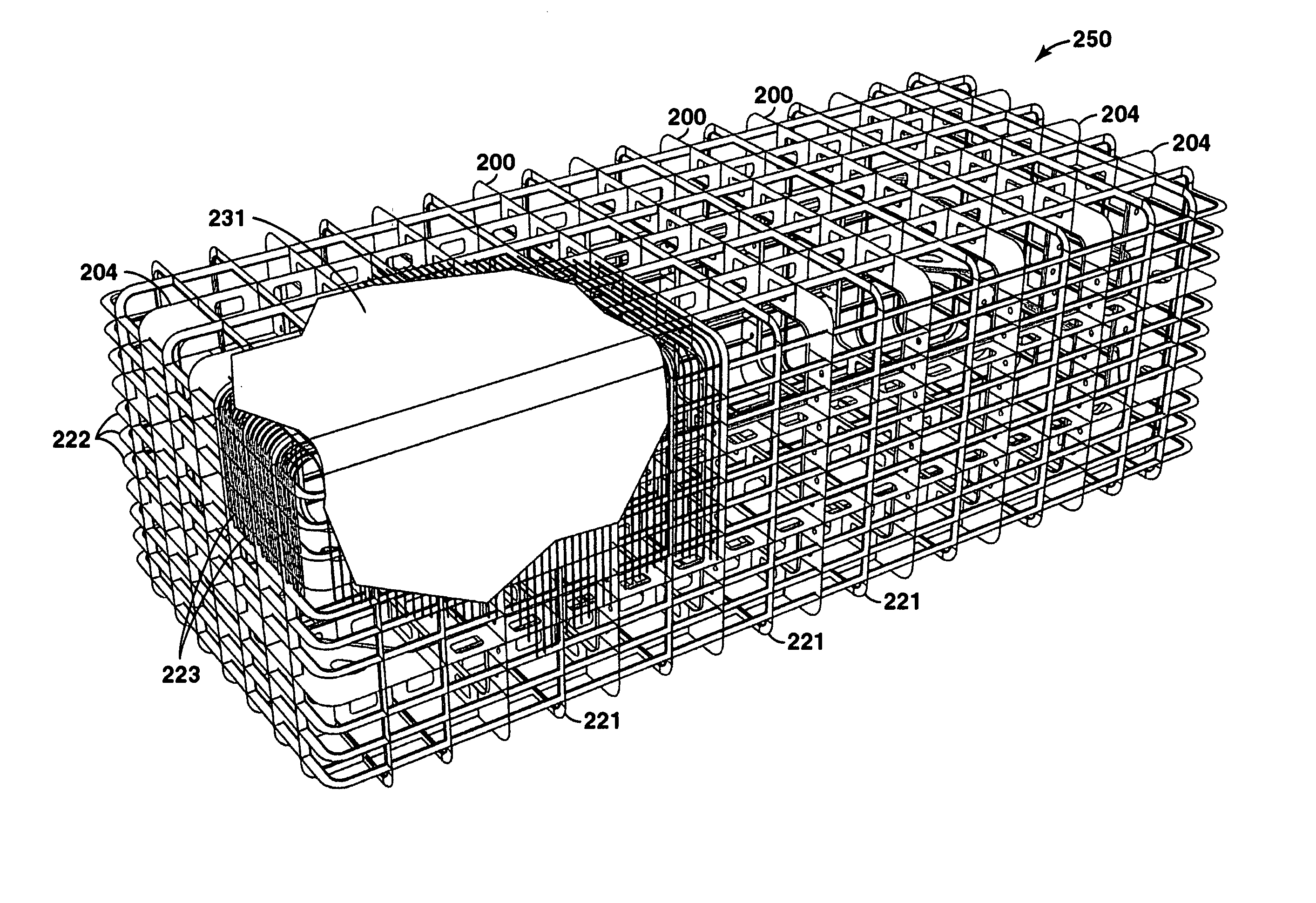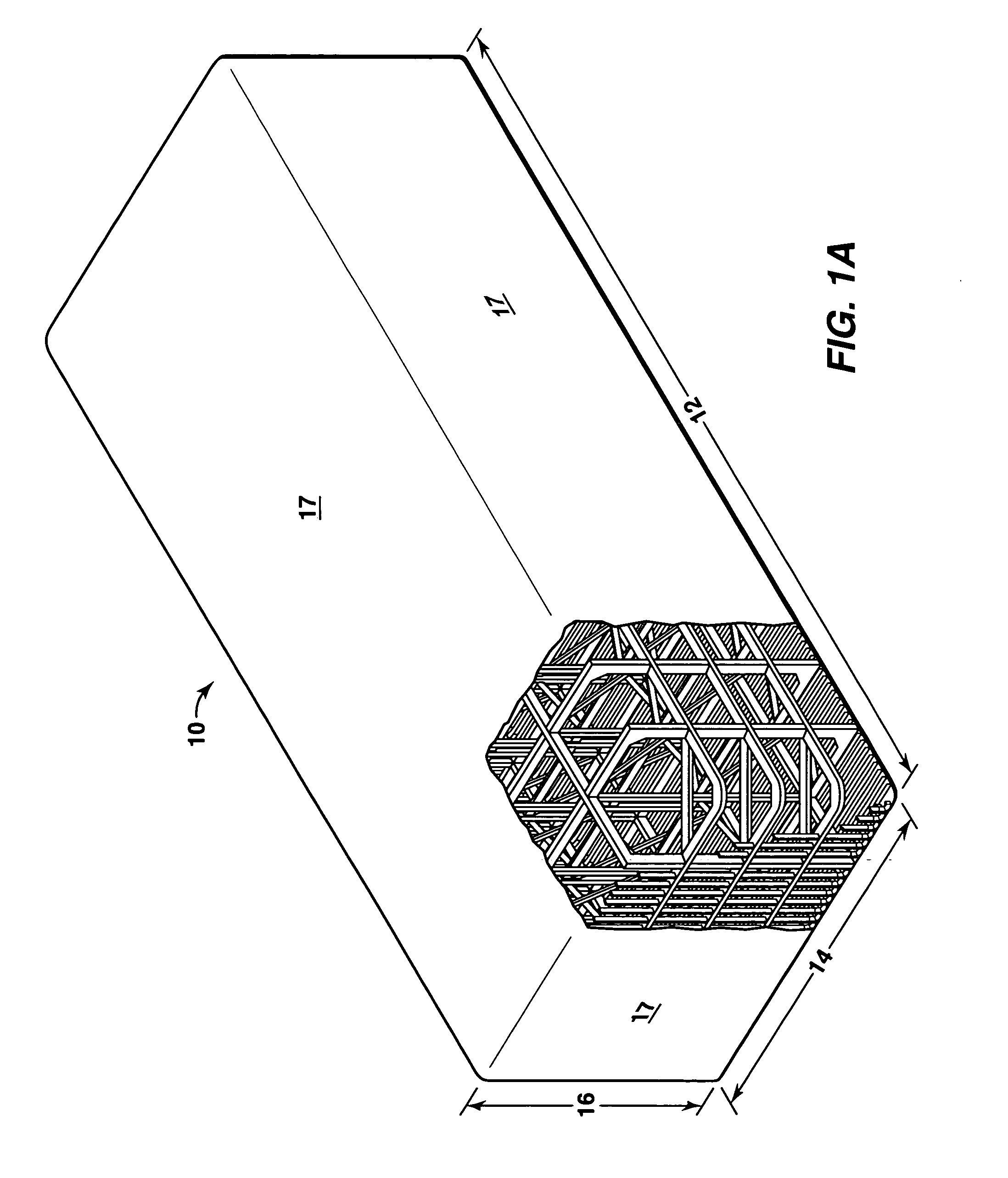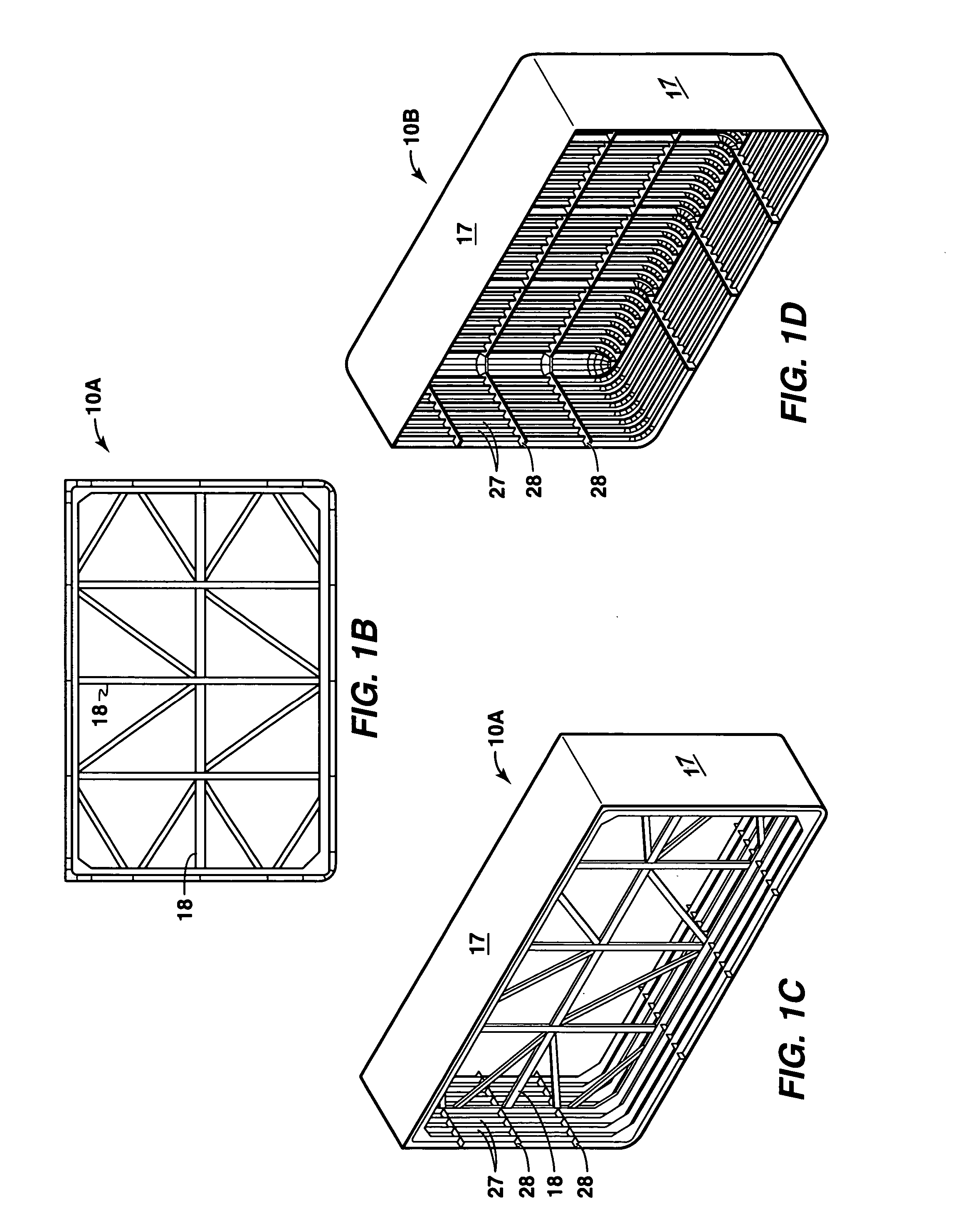Liquefied natural gas storage tank
- Summary
- Abstract
- Description
- Claims
- Application Information
AI Technical Summary
Benefits of technology
Problems solved by technology
Method used
Image
Examples
Embodiment Construction
[0043]A substantially rectangular-shaped storage tank of a preferred embodiment of the present invention is designed to provide the ability to vary capacity of the tank, in discrete steps, without a substantial redesign of the tank. Solely for construction purposes, this is achieved by considering the tank as comprising a number of similar structural modules. For example, a 100,000 meter3 tank may be considered to comprise four substantially equal structural modules obtained by cutting a large tank by three imaginary vertical planes suitably spaced along the length direction such that each section is conceptually able to hold approximately 25,000 meter3 of liquid. Such a tank is comprised of two substantially identical end sections and two substantially identical mid sections. By removing or adding mid sections during construction of the tank, tanks of same cross-section, i.e., same height and width, but variable length and thus variable capacity, in discrete steps, can be obtained....
PUM
 Login to View More
Login to View More Abstract
Description
Claims
Application Information
 Login to View More
Login to View More - R&D
- Intellectual Property
- Life Sciences
- Materials
- Tech Scout
- Unparalleled Data Quality
- Higher Quality Content
- 60% Fewer Hallucinations
Browse by: Latest US Patents, China's latest patents, Technical Efficacy Thesaurus, Application Domain, Technology Topic, Popular Technical Reports.
© 2025 PatSnap. All rights reserved.Legal|Privacy policy|Modern Slavery Act Transparency Statement|Sitemap|About US| Contact US: help@patsnap.com



